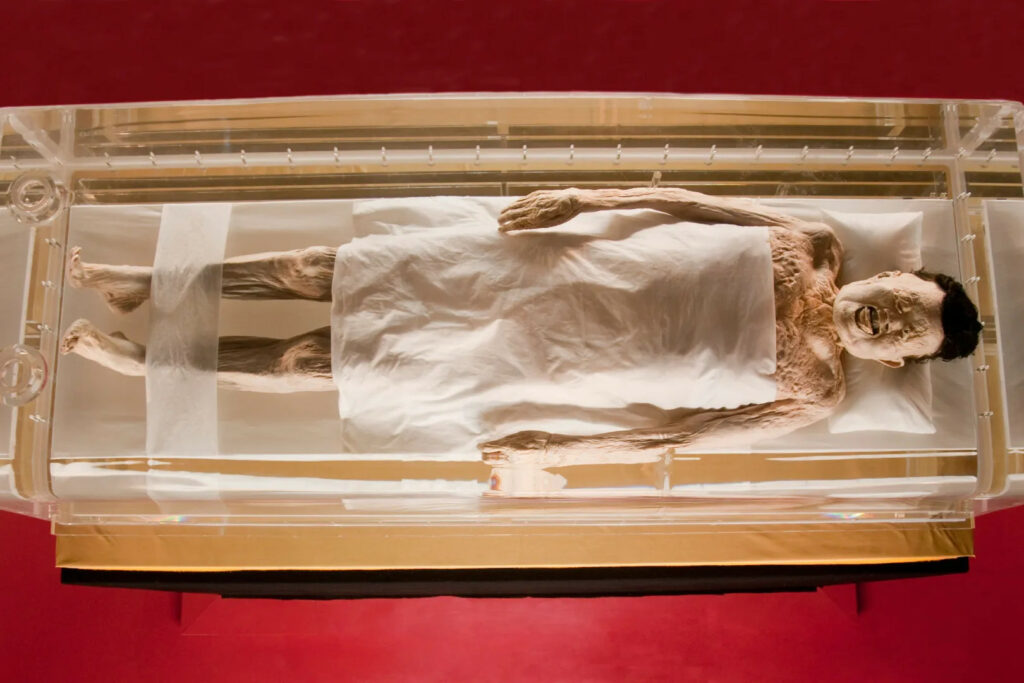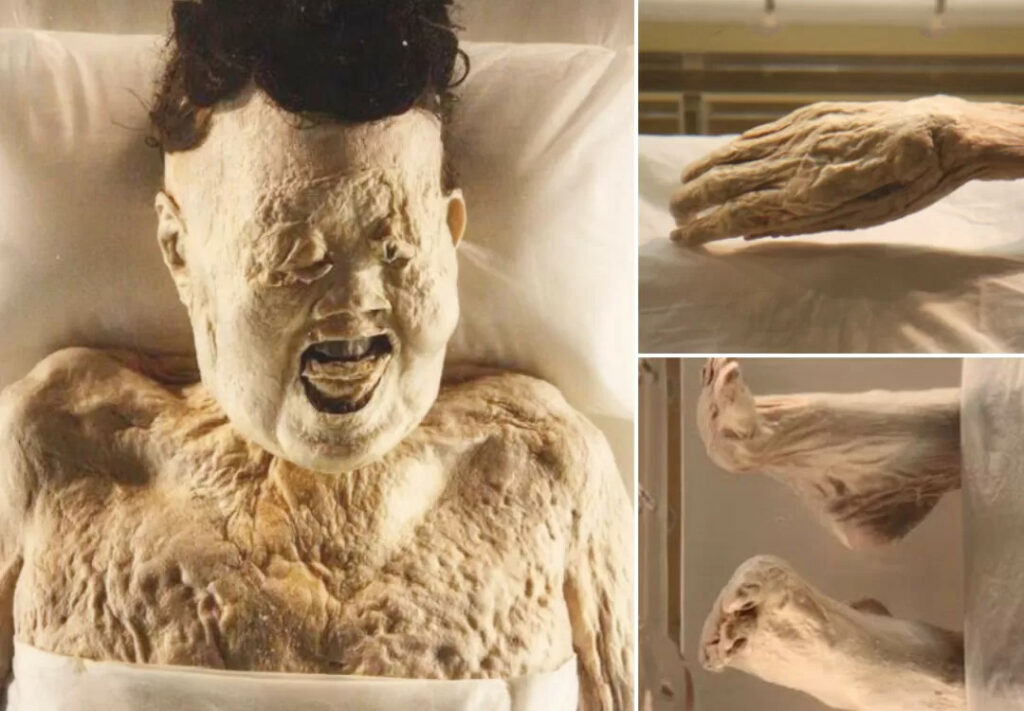A Surprising Discovery
In 1971, a significant discovery occurred near Changsha, China. Workers digging in a location close to an air raid shelter unexpectedly uncovered an enormous tomb belonging to Xin Zhui, also known as Lady Dai. Inside, they found a wealth of over 1,000 valuable artifacts, including cosmetics, lacquerware, and intricately crafted wooden figures representing her entourage of attendants.

What amazed researchers even more than the tomb’s lavish contents was the remarkable preservation of Xin Zhui’s remains. Not only were her possessions well-maintained, but her body also showed astonishing signs of preservation, providing a rare window into history and captivating the attention of scholars and archaeologists alike.
Intriguing Findings
An Unprecedented Autopsy
Scientists performed an autopsy on Xin Zhui’s body and uncovered remarkable findings. Her skin retained its softness, moisture, and elasticity, closely resembling that of a living individual. Her original hair, including eyebrows and eyelashes, remained intact. Despite the passage of time, her organs were undamaged, and her veins contained type-A blood.
The discovery of blood clots indicated that Xin Zhui had died from a heart attack. Furthermore, researchers identified several health issues, including gallstones, high cholesterol, high blood pressure, and liver disease.

The Key to Lasting Preservation
Careful Burial Practices
The remarkable preservation of Lady Dai’s mummy is largely due to the airtight and elaborate tomb in which she was interred. Nestled within four pine coffins, Xin Zhui was wrapped in multiple layers of silk and immersed in a slightly acidic liquid. The tomb was lined with moisture-absorbing charcoal and sealed with clay to keep decay-inducing bacteria and oxygen at bay. These careful sealing methods and protective measures played a crucial role in preserving Xin Zhui’s remains so exceptionally.

A Peek into History
The Life of Xin Zhui
While details about Xin Zhui’s burial and cause of death are well-documented, information regarding her life is somewhat scarce. She was the esteemed wife of Li Cang, the Marquis of Dai, who was a prominent official during the Han dynasty. Tragically, Xin Zhui passed away at the age of 50 due to a heart attack, likely linked to a sedentary lifestyle, obesity, and an indulgent diet.

Today, Xin Zhui’s mummified remains are housed in the Hunan Provincial Museum, where they continue to intrigue both researchers and the general public. Her extraordinarily preserved body has become a focal point for ongoing research into corpse preservation techniques. Through the study of her remains and the artifacts found with her, experts gain valuable insights into the lifestyle, health, and cultural practices of ancient China’s elite during the Han dynasty. The legacy of Xin Zhui as the remarkably intact Lady Dai mummy endures as a testament to the exceptional preservation methods of the past and the endless mysteries they reveal to us today.


